Experiences
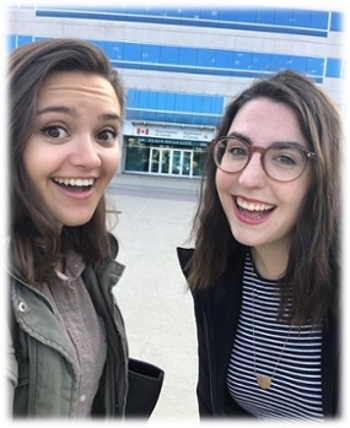
Jessica Di Laurenzio (2017) and Grace Evers (2017)
interning at Library & Archives Canada in Gatineau, QC
"Banting House National Historic Site of Canada has benefited greatly from the contributions of the students of Western’s MA Program in Public History. From public interpretation to policy development, the enthusiasm, knowledge, and skills the students bring with them have helped us meet our mission and deliver a better product to the public."
- Grant Maltman
Curator, Banting House National Historic Site of Canada
Below are internship profiles from students in our program. If you would like to include your experience here, please contact Professor Michael Dove.
Kat Bezaire (Class of 2021) - The Northern Ontario Railroad Museum and Heritage Centre. Capreol, Ontario
This past spring, I was offered a full time year-long contract (incorporating my 12-week summer internship) to work at the Northern Ontario Railroad Museum and Heritage Centre in Capreol, Ontario, the third largest tourist attraction in Greater Sudbury. My role there was to serve as its archivist/collections manager and to plan for future exhibit design. Most of my early focus was devoted to reorganizing and updating current records to prepare for the shift over to a new database. Other important tasks included accepting new acquisitions, conducting research, and of course, cataloguing! 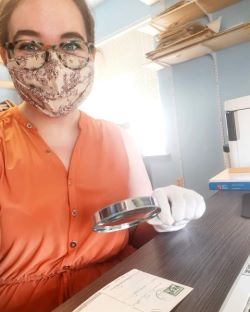 One particularly interesting collection I was responsible for cataloguing was the school car collection. School cars were created by the Ontario Department of Education in 1923 in order to deliver education to rural isolated communities including those located in Northeastern Ontario. Once I had started cataloguing this collection I was completely immersed in the stories of the experience of teaching and learning on board a school car. My research and technical training gained through the MA public history program helped me design and create a School Car Story Map Digital Exhibit!
One particularly interesting collection I was responsible for cataloguing was the school car collection. School cars were created by the Ontario Department of Education in 1923 in order to deliver education to rural isolated communities including those located in Northeastern Ontario. Once I had started cataloguing this collection I was completely immersed in the stories of the experience of teaching and learning on board a school car. My research and technical training gained through the MA public history program helped me design and create a School Car Story Map Digital Exhibit!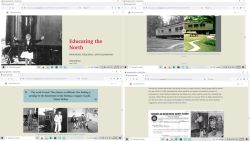 I also served as the Centre’s social media manager. I ran its Facebook, Twitter, and Instagram pages in order to attract visitors and to gauge the level of interest in regard to what the public would like to see on display. I was often responsible for assisting the summer students during peak times and providing tours for visitors. During the off-season I will begin working with the exhibit team to curate new exhibits and displays throughout both the museum and the heritage centre in an effort to promote further public engagement.
I also served as the Centre’s social media manager. I ran its Facebook, Twitter, and Instagram pages in order to attract visitors and to gauge the level of interest in regard to what the public would like to see on display. I was often responsible for assisting the summer students during peak times and providing tours for visitors. During the off-season I will begin working with the exhibit team to curate new exhibits and displays throughout both the museum and the heritage centre in an effort to promote further public engagement. 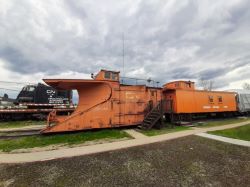 My courses, projects and of course my internship have been very rewarding and enjoyable. I have learned a variety of new skills and gained the experience to prepare me for a career in the public history field.
My courses, projects and of course my internship have been very rewarding and enjoyable. I have learned a variety of new skills and gained the experience to prepare me for a career in the public history field.
Robin Marshall (Class of 2021) - Engineering Institute of Canada (EIC). London, Ontario
Working for the Engineering Institute of Canada (EIC) as an Oral Historian this summer has been an exciting and humbling experience. I was hired to conduct oral interviews with prolific engineers who have contributed to Canadian achievements in engineering. Completing a total of fourteen interviews, I was able to gather a variety of stories from bio, civil, electrical, geotechnical, mechanical, and dam engineers. This project required researching the Narrators (interviewees), conducting the actual interviews, transcribing and processing the interviews, as well as creating audio and visual content for the EIC website.
Interview with Dr. Suzelle Barrington
I learned so much about the field of engineering and the importance of this practice within society, for their work is present in our everyday lives. The Narrators shared invaluable stories which continue to add to our appreciation for the field and all the great Canadian innovations that would usually be taken for granted. Without these individuals, for example, Canada would not have made its mark in space with the Canadarm. We would not have automated and efficient farm buildings. Our infantry soldiers would not have the proper protective equipment. And the CN tower would not be standing tall in Toronto! Interview with Dr. Karl Doetsch: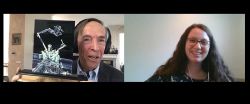
I am very thankful to the Public History program for preparing me for this internship. The skills gained at Western proved incredibly important. I am appreciative of this experience and all those who have helped and prepared me for this work. Looking forward to seeing this project grow in the years ahead!
Mike Bartlett (Class of 2020) – Digital History of Engineering. London, Ontario
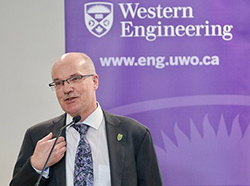
The restrictions imposed by the Covid-19 pandemic caused the postponement of a previously arranged internship. Fortunately, Professor William J. Turkel of Western’s History Department kindly agreed to supervise a work-from-home internship with the following two major initiatives:
Concise online descriptions of the Canadian Society for Civil Engineering (CSCE) historic civil engineering sites; Applications of digital history techniques to historic engineering structures.
The Canadian Society of Civil Engineering (CSCE) has currently identified 78 Historic Civil Engineering sites. The online descriptions, at https://cscehistory.ca are inconsistent, extremely superficial, or non-existent. The Intern, currently Chair of the CSCE National History Committee, led an initiative to update these descriptions using a standard template. Online research yielded a large quantity of excellent information including historic reports and images. Google Street View was an excellent resource for finding plaques commemorating each site. The initiative was an excellent opportunity to reach out to professional colleagues across Canada to obtain and confirm information to enhance the site descriptions. The 78 revised descriptions comprise roughly 55,000 words, 450 images, and 240 links to online information.
The project applying artificial intelligence techniques to identify and classify 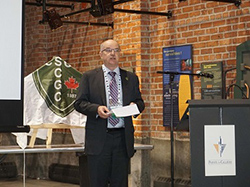 forms of historic bridges combined the Intern’s expertise in bridge engineering with Professor Turkel’s considerable expertise in digital history techniques. A dataset of 4800 images of Canadian and American bridges constructed between 1865 and 2019 was created. Descriptors for each bridge were catalogued and entered in a Relational Database Management System (RDBM) for manipulation using Structured Query Language (SQL). Artificial Intelligence routines in Wolfram Mathematica were used to analyze the images. A long abstract describing work-to-date, titled “Digital Analysis of Historic Bridge Images”, was submitted for possible virtual presentation at the 25th Conference on Cultural Heritage and New Technologies (CHNT) in Vienna. Work on this initiative will continue beyond the formal end of the internship.
forms of historic bridges combined the Intern’s expertise in bridge engineering with Professor Turkel’s considerable expertise in digital history techniques. A dataset of 4800 images of Canadian and American bridges constructed between 1865 and 2019 was created. Descriptors for each bridge were catalogued and entered in a Relational Database Management System (RDBM) for manipulation using Structured Query Language (SQL). Artificial Intelligence routines in Wolfram Mathematica were used to analyze the images. A long abstract describing work-to-date, titled “Digital Analysis of Historic Bridge Images”, was submitted for possible virtual presentation at the 25th Conference on Cultural Heritage and New Technologies (CHNT) in Vienna. Work on this initiative will continue beyond the formal end of the internship.
The Intern intends to continue to transition to retirement, hoping to find interesting consulting work in that part of the Venn Diagram where history and structural engineering intersect. The internship has provided an excellent opportunity to demonstrate his ability to use methods and techniques learned in Western’s MA Public History program. The experience of working on the two projects has formed an excellent foundation for future activities as a Public Historian!
Jessica Chernich (Class of 2020) – Museum of Ontario Archaeology. London, Ontario
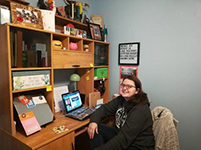
My summer internship was completed with London’s Museum of Ontario Archaeology working as an Online Intern during the Covid-19 Pandemic. During this 12-week period, I assisted the education department with the creation of a set of six camp kits that could be purchased online as a way to keep children busy during stay at home orders.
The camp kits varied in themes, but all related to archaeology in some way. I was primarily responsible for designing a variety of the activities in the kits as well as designing templates using Cricut’s design software. I also spent time creating live video content on plant and animal resources that can be found in the Medway Valley.
Throughout my internship, I was constantly looking back at the variety  of ways I could apply what I learned in classes with Western, especially taking note of the many lessons in ethics and inclusivity that became extremely relevant during this time. Western’s public history classes also emphasized the need to experiment, and during a time where adapting to the situations we currently faced was a necessity, we had to find creative ways to continue to reach the audience that attended MOA’s camps and festivals in the past.
of ways I could apply what I learned in classes with Western, especially taking note of the many lessons in ethics and inclusivity that became extremely relevant during this time. Western’s public history classes also emphasized the need to experiment, and during a time where adapting to the situations we currently faced was a necessity, we had to find creative ways to continue to reach the audience that attended MOA’s camps and festivals in the past. This internship was definitely an abnormal situation; however, I am forever grateful that I was able to complete it with an institution that was not afraid to analyze the situation and quickly find ways to address the need for programming. At a time that is difficult for a variety of fields, including public history, the lessons I learned during my time with MOA are lessons I will carry with me as I further enter the field.
This internship was definitely an abnormal situation; however, I am forever grateful that I was able to complete it with an institution that was not afraid to analyze the situation and quickly find ways to address the need for programming. At a time that is difficult for a variety of fields, including public history, the lessons I learned during my time with MOA are lessons I will carry with me as I further enter the field.
Skylee-Storm Hogan (Class of 2019) - Know History Inc, Ottawa, Ontario
My internship at Know History Inc. in Ottawa has been excellent preparation for a career in Public History. Working with different histories, communities, organizations, and the public has made me more confident in my abilities. It has exposed me to the different ways in which we can share heritage with the public and the ways in which heritage gives communities and organizations meaning. Knowing that the research we conduct and the deliverables we produce make a difference for our clients makes me feel like I am contributing to something valuable. The different opportunities to learn new skills, engage with new technologies, work on podcasts or present workshops to colleagues, keeps the work feeling dynamic.
Me and fellow MA public history student Rachel Delle Palme at the annual Know History Heritage Networking Night in Ottawa: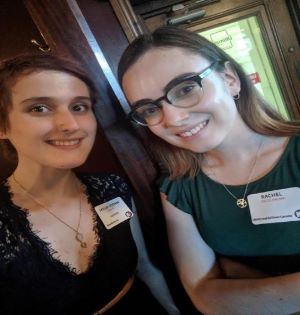 I like that Know History does not separate itself from the wider heritage community. We are encouraged to go to area museums, attend festivals, write for history blogs, speak at conferences, and engage with the community on the heritage we are passionate about. The Know History Heritage Networking Night is a great example of how the company reaches out to the communities in both Ottawa and Calgary to stay relevant and engaged within those communities.
I like that Know History does not separate itself from the wider heritage community. We are encouraged to go to area museums, attend festivals, write for history blogs, speak at conferences, and engage with the community on the heritage we are passionate about. The Know History Heritage Networking Night is a great example of how the company reaches out to the communities in both Ottawa and Calgary to stay relevant and engaged within those communities.
As the first Western MA Public History student to serve as a Know History Research Associate Intern, I have met a great group of Heritage professionals who inspire me to improve on my work every day. This internship has given me the perfect level of exposure to consulting to know that I want to continue in this field!
Julia Schwindt (Class of 2018) - Spin Master LTD, Toronto, Ontario

During my summer internship, I worked as an Archivist Intern for Spin Master LTD., a children’s entertainment company located in downtown Toronto. Spin Master is a Canadian company and global leader in all things children’s toys, games and entertainment. They are most known for their international hits such as Air Hogs, Aquadoodle, Kinetic Sand, PAW Patrol, Hatchimals and more.
The first three weeks of my internship was spent at the Toronto HQ learning the ropes of Spin Master’s archival system under the guidance of my manager and fellow Public History alumni Sushima Assi. After a brief three weeks learning about the company and archival process, I was sent to Long Island City, New York City to work at Cardinal Industries, a company acquired by Spin Master. For two months I catalogued and inventoried over 1500 products ranging from classic game sets to puzzles, to be sent back to the Toronto headquarters for safe keeping and future use. During that time and in preparation for Cardinal’s big office move, I assisted and implemented a records retention system whereby I cleaned out and organized large amounts of paper records stored at the facility. After having all the product organized and prepped for shipping and 12 pallets worth of records sent to an offsite records retention company, I then headed back to Toronto to complete the last week of my internship.
Upon completion, I was thrilled to be offered a one year contract as Archivist to Spin Master! I am currently working on various projects including auditing the archival holdings, managing digital assets and media hits, setting up displays around the office, completing requests for archival materials and collecting prototypes, products and documents from the Toronto and LA offices.
I believe the MA Public History Program prepared me to better manage my time, deal with many projects at once and work under pressure. It also exposed me to numerous different skills and career paths that I would not have otherwise thought of pursuing. Thanks for a great year!
Kelsey Priestman (Class of 2017) - Port Arthur Historic Sites, Tasmania, Australia
 My summer internship was spent in Tasmania, Australia, working for both Port Arthur Historic Sites and the University of Tasmania.
My summer internship was spent in Tasmania, Australia, working for both Port Arthur Historic Sites and the University of Tasmania.
The project was to align the archeological data of the Tasman Peninsula with the archival data, ultimately recreating the infrastructure, locations, individuals etc. of the 19th century penal settlement. I transcribed a 330 conduct records including offences punishments, freedoms and locations, coded the data, and analyzed the information. This process provided me with a detailed understanding of how raw data is transformed into interpretation, and how just how necessary each step is.
Every day, I applied what I learned during the program, even when I wasn’t at work! I attended workshops, focus groups regarding new interpretation, and even saw the original Correspondence records at the Archives, which are part UNESCO’s Memory of the World Registrar – which was amazing! I also had the unique experience of living at Port Arthur - a UNESCO World Heritage Site for six weeks. Each day I investigated a different historic building and I was constantly surrounded by amazing people from diverse fields of history, archeology, museology and management.
This internship was the perfect capstone to the Western’s one year program. Not only did the experience align with the theory we learned in classes and projects, but it also helped prepare me for a future in public history. Following this internship, I accepted a six-month contract to head back to Australia to take on more!
Mary Spinks (Class of 2017) - Niagara Falls History Museums, Niagara Falls, Ontario
 All my expectations for my internship with the Niagara Falls History Museums were exceeded. The position of curatorial assistant helped me to develop many skills that are desirable qualities to employers in heritage. I gained experience photo-documenting and rehousing the 8,000 artifacts in a branch of the museum’s collection. I also worked extensively with the museum’s Past Perfect database. My duties and responsibilities were not restricted to collections management tasks, but also included interpretation of the museum space, research requests from the public, transcription work, visitor experience, and special events assistance. I was encouraged by my supervisor to put forward, as well as execute, ideas for projects and enhancements to the exhibit space. This flexibility allowed me to incorporate many of the skills that I developed during my coursework in the Public History program to projects assigned to me during my internship.
All my expectations for my internship with the Niagara Falls History Museums were exceeded. The position of curatorial assistant helped me to develop many skills that are desirable qualities to employers in heritage. I gained experience photo-documenting and rehousing the 8,000 artifacts in a branch of the museum’s collection. I also worked extensively with the museum’s Past Perfect database. My duties and responsibilities were not restricted to collections management tasks, but also included interpretation of the museum space, research requests from the public, transcription work, visitor experience, and special events assistance. I was encouraged by my supervisor to put forward, as well as execute, ideas for projects and enhancements to the exhibit space. This flexibility allowed me to incorporate many of the skills that I developed during my coursework in the Public History program to projects assigned to me during my internship.
Internships are not only beneficial for developing practical skills for future employment, but also assist new graduates in making the decision of which path they would like to pursue in heritage. This internship has confirmed my desire to work in the museum field, specifically working with material culture, in a collections management capacity. I feel prepared to continue my career in the museum field because of the skills I have developed in the Public History program and during my internship with the Niagara Falls History Museums. Interning with the Niagara Falls History Museums as a curatorial assistant has diversified my resume, providing me with the opportunity to interact with visitors from around the world, in a unique region of Canada.
Robert De Rose (Class of 2016) - D.K. Seaman Hockey Resource Centre, Hockey Hall of Fame, Toronto, Ontario

I completed my internship at the D.K. Seaman Hockey Resource Centre in Toronto. As an extension of the Hockey Hall of Fame (HHOF), the 18,000 square foot facility is home to the HHOF's boundless artifact and archival collections. The site’s holdings include photographs, video footage, biographical files, digitally restored materials, publications, periodicals, media guides, statistical analyses and much more. Among other things, the resource centre also possesses a large collection of game-worn memorabilia, hockey paraphernalia and the largest hockey stick storage facility in the world. Most notably, the building serves as a warehouse for every major hockey trophy in existence, including the Stanley Cup.
At the resource centre, I was tasked with cataloguing and processing the entire Donald McMurchy Collection which encompassed 1146 scrapbooks, nearly one thousand game programs, hundreds of books/magazines and many pieces of NHL memorabilia. Though it may seem overwhelming, Dr. Spanner’s Understanding Archives course prepared me for such a challenge as I was well-versed in archival terms and the archival process.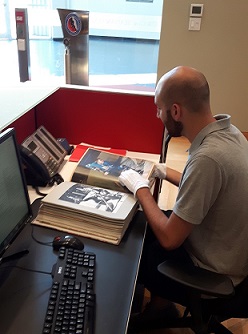
Western’s Public History MA program set me up for success. Through completing a wide-range of coursework and projects, I feel that I have a more competitive resume when it comes to seeking jobs in the heritage field. I believe I now have experience in the many facets of public history whether it be in archival work, museum studies, digital history or heritage planning. Furthermore, I believe the internship component of the program was fundamental to my growth as a public historian. Not many university programs can promise students hands-on history experience, but this program provided me with such opportunity. Through the internship, I further developed my skills as an archivist as I was able to put theory in practice.
Thankfully, I continue to develop these skills at the resource centre to this day as I secured a one-year contract upon completing my internship. I am truly honoured to be working towards the preservation of Canada's greatest game and cultural export.
Taryn Dewar (Class of 2015) - Oil Museum of Canada, Oil Springs, Ontario
 As this year’s Robert Cochrane Lambton County Fellow, I had the opportunity to complete my internship at the Oil Museum of Canada in Oil Springs, Ontario. Working in a small museum meant that I was involved with a number of different projects. These included preparing content for an upcoming online exhibit on International Drillers from the County of Lambton, developing a Facebook page for the museum to increase its online presence, and helping to reorganize one of the galleries.
As this year’s Robert Cochrane Lambton County Fellow, I had the opportunity to complete my internship at the Oil Museum of Canada in Oil Springs, Ontario. Working in a small museum meant that I was involved with a number of different projects. These included preparing content for an upcoming online exhibit on International Drillers from the County of Lambton, developing a Facebook page for the museum to increase its online presence, and helping to reorganize one of the galleries.
My internship experience drew on the tools I had learned in classes throughout the year and allowed me to put those skills into practice. From coding to creating mounts for artifacts, I continued to learn about the tools of the museum trade. As the summer progressed, I also learned about how small museums operate as well as their organizational structures.
My time in Oil Springs helped to prepare me for a career in the Public History field and allowed me to work on tangible projects while working with a great team of people. It is also wonderful to know that the projects I helped with will contribute to the preservation and enhancement of the artifacts, culture, and history of oil production in the County of Lambton.
Scott Dickinson (Class of 2015) - Fanshawe Pioneer Village, London, Ontario
 My summer was spent at Fanshawe Pioneer Village, an outdoor museum in London, Ontario dedicated to interpreting the history of London and the historic townships that make up Middlesex County. My main duty while at the village was organizing a great many mixed documents into several clear collections. I was also involved in a large collections relocation project and had a number of opportunities to interpret historic buildings on site.
My summer was spent at Fanshawe Pioneer Village, an outdoor museum in London, Ontario dedicated to interpreting the history of London and the historic townships that make up Middlesex County. My main duty while at the village was organizing a great many mixed documents into several clear collections. I was also involved in a large collections relocation project and had a number of opportunities to interpret historic buildings on site.
This range of tasks allowed me to be involved in many aspects of museum operation, including artifact conservation, exhibit design, collections management and public outreach. This wide range of experiences reinforced what the Public History program had taught me and, in many ways, went well beyond it. It gave me a chance to assist in a large scale project, complete several individual projects for the museum and interact with the visiting public in a way that gave context to all the work I did behind the scenes.
This internship reaffirmed my interest in working in the Public History field, especially in collections and archives management. The sheer variety of things that I was able to do this summer makes me feel much more prepared for the future.
Elizabeth Miron (Class of 2014) - Library and Archives Canada (LAC), Gatineau, Quebec
 Overall I could not be happier with my summer internship at Library and Archives Canada. The internship component is meant to expose students to practical knowledge and help with establishing workplace connections in order to find a job. I felt this experience has accomplished all of those elements. I have developed my practical knowledge of archives immensely, including arrangement, description, and disposition. Throughout the summer I have had the opportunity to meet and network with many experts in the archival field. My time spent at LAC has helped prepare for my future as a public historian whose main goal is to interpret history for the public. Working as an archivist this summer at LAC I have been able to interpret records for the public and prepare them for future researchers. This experience has cemented the knowledge I have learned in the program over the past year.
Overall I could not be happier with my summer internship at Library and Archives Canada. The internship component is meant to expose students to practical knowledge and help with establishing workplace connections in order to find a job. I felt this experience has accomplished all of those elements. I have developed my practical knowledge of archives immensely, including arrangement, description, and disposition. Throughout the summer I have had the opportunity to meet and network with many experts in the archival field. My time spent at LAC has helped prepare for my future as a public historian whose main goal is to interpret history for the public. Working as an archivist this summer at LAC I have been able to interpret records for the public and prepare them for future researchers. This experience has cemented the knowledge I have learned in the program over the past year.
Laura Walter (Class of 2014) - Ontario Heritage Trust, Toronto, Ontario
 Between May and August 2014, I completed the internship component of the program at the large public history institution of the Ontario Heritage Trust. This invaluable opportunity has provided me with essential experience in developing my skills, under excellent leadership, in order to be successful in a future in public history. Working as the Heritage Assistant to the Researcher at the Trust, I was involved in the acquisition, monitoring and protection process of a governmental agency that preserves and safeguards Ontario’s built and natural heritage. Being a part of these processes, writing reports and conducting research for the Trust, has given me a thorough understanding of how a large public history institution operates internally and externally. Therefore, by integrating graduate level theory and research with practical experience, I was able to gain highly marketable skills and experience that can be immensely utilized in going forth in a public history career.
Between May and August 2014, I completed the internship component of the program at the large public history institution of the Ontario Heritage Trust. This invaluable opportunity has provided me with essential experience in developing my skills, under excellent leadership, in order to be successful in a future in public history. Working as the Heritage Assistant to the Researcher at the Trust, I was involved in the acquisition, monitoring and protection process of a governmental agency that preserves and safeguards Ontario’s built and natural heritage. Being a part of these processes, writing reports and conducting research for the Trust, has given me a thorough understanding of how a large public history institution operates internally and externally. Therefore, by integrating graduate level theory and research with practical experience, I was able to gain highly marketable skills and experience that can be immensely utilized in going forth in a public history career.
Carla Watson (Class of 2014) - The Rooms Corporation, St. John’s, Newfoundland & Labrador
 As a graduate student intern with The Rooms, which houses the provincial archives, museum, and art gallery, in St. John’s, Newfoundland, I assisted with the research and design of a new exhibit on the First World War. The Rooms was a fantastic location for an internship. The staff was always willing to give new opportunities and attempted to present a broad spectrum of tasks and roles that one could take on in a museum setting. I would recommend Western students consider The Rooms for their placement.
As a graduate student intern with The Rooms, which houses the provincial archives, museum, and art gallery, in St. John’s, Newfoundland, I assisted with the research and design of a new exhibit on the First World War. The Rooms was a fantastic location for an internship. The staff was always willing to give new opportunities and attempted to present a broad spectrum of tasks and roles that one could take on in a museum setting. I would recommend Western students consider The Rooms for their placement.
Adriana Ayers (Class of 2012) - The Museum of the Moving Image, New York City, New York, USA
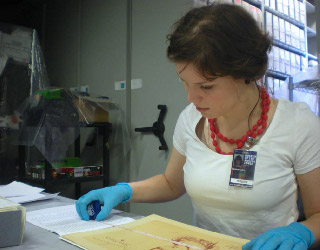 The Museum of the Moving Image (MoMI) is a unique institution dedicated to exploring art, history, and technology of the moving image. My internship allowed me to go behind the screen and experience the chronological pathway through the history of the moving image beginning with a Zoetrope and ending with Frogger.
The Museum of the Moving Image (MoMI) is a unique institution dedicated to exploring art, history, and technology of the moving image. My internship allowed me to go behind the screen and experience the chronological pathway through the history of the moving image beginning with a Zoetrope and ending with Frogger.
The crux of my summer work consisted of a 6000 plus piece ephemera collection, consisting of mostly of film posters, as well as lobby cards, press books and film stills. The collection was donated to the Museum in 1986 and aside from a rough estimate of what the donation entailed; no one had looked at it since. Each piece of the collection had to be measured, photographed, documented and researched. In some instances translating was also necessary as many of the posters and press materials were for French releases.
The posters, which made up the majority of the collection, ranged in sizes from 246 inches by 108 inches (also known as a Billboard or 24-sheet) to 14 inches by 21 inches (Window Card). The space, not to mention the patience, required to unfold the 24-sheets was expansive to say the least, but the sight of these posters was ample payoff. Dating from 1940 to 1989, the vibrant colours remained remarkably intact for sitting unattended for 25 years.
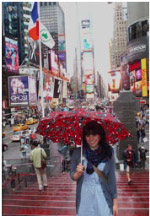
One of the perks of working for MoMI was my museum ID card. I was able to visit every museum and most movie theatres in New York City for free; needless to say I took advantage of this privilege. I visited at least one museum and one film a week, and when I was not roaming around the MET or eating popcorn at Film Forum, I filled any unscheduled hours with as many City events as I could. I took every opportunity to immerse myself in cultural activities and historical tours; there was never a shortage of extra-curricular activities. I also took advantage of the special screenings, events, and lectures at MoMI, having the opportunity to meet some of my favourite directors in person. Most notably I met Todd Haynes, Martin Scorsese, and David Cronenberg – truly a cinophile’s dream.
Adrian Petry (Class of 2012) - St. Catharines Museum and Welland Canals Centre, St. Catharines, Ontario
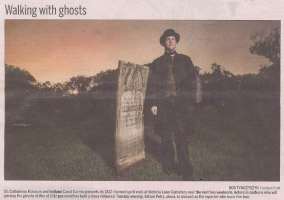 My summer was very busy and very exciting. I was handed the exciting task of creating cemetery tours for the Victoria Lawn Cemetery, one of Niagara’s oldest and largest cemeteries, as a part of the Niagara Cultural Capital of Canada project ‘A Walk Through History.’ The task came with a fairly large budget (as museum programming goes) and a tight timeline. It of course had a War of 1812 theme (hello? We’re in Niagara) and so the research began, first with finding a cast of characters who were veterans of the war and who were buried in the cemetery. Spirit walks are a really good way of interpreting first person histories, especially when there are a lot of primary resources to draw from. There are cautions one must undertake as a writer, director, stage manager of a project in which the story line interprets the personal histories of the city’s most prominent citizens (if one is to keep one’s job). Fortunately, I ended up with such a fantastic group of volunteers to work with that the entire process has been a blast! Busy, but fun, in the least! The project is just in its final stages now – performance!
My summer was very busy and very exciting. I was handed the exciting task of creating cemetery tours for the Victoria Lawn Cemetery, one of Niagara’s oldest and largest cemeteries, as a part of the Niagara Cultural Capital of Canada project ‘A Walk Through History.’ The task came with a fairly large budget (as museum programming goes) and a tight timeline. It of course had a War of 1812 theme (hello? We’re in Niagara) and so the research began, first with finding a cast of characters who were veterans of the war and who were buried in the cemetery. Spirit walks are a really good way of interpreting first person histories, especially when there are a lot of primary resources to draw from. There are cautions one must undertake as a writer, director, stage manager of a project in which the story line interprets the personal histories of the city’s most prominent citizens (if one is to keep one’s job). Fortunately, I ended up with such a fantastic group of volunteers to work with that the entire process has been a blast! Busy, but fun, in the least! The project is just in its final stages now – performance!

